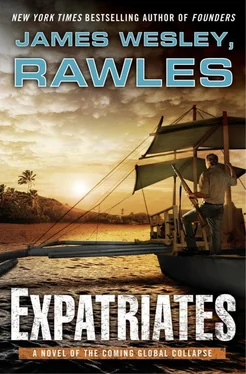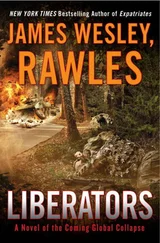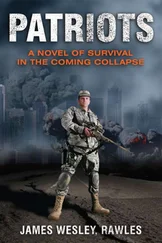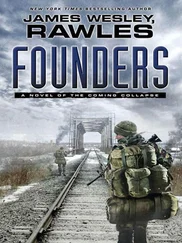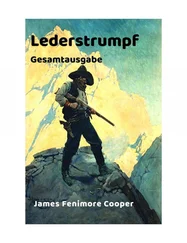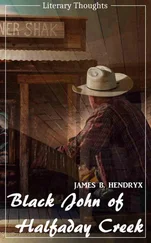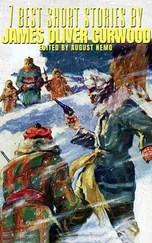In Rapid Creek, Quentin took up residence in the disused gardener’s house on the grounds of an estate owned by Kasun Logging. The owner was about to “head for the Big Smoke” (a big city) with his family and was happy to have a caretaker.
Quentin Whittle owned just two guns: a 1920s-vintage Belgian-made Liege 12 bore double-barrel shotgun with almost all of its original bluing worn to a gray patina, and a Remington Model 7 .308 Winchester bolt action. The latter was equipped with an inexpensive Simmons variable 3-9-power scope. The rifle’s buttstock was badly battered from constant use in the field.
As a designated Stay Behind, Quentin was issued four pale olive green 200-round cans of ammunition marked 7.62 MM BALL F4 on their sides and 7.62 BALL BDR-CHGR on their lids. Each can held four green canvas bandoleers of ammunition in stripper clips. The ammo was compatible with his .308 Winchester rifle. His prior army qualifications also made him eligible to be issued fragmentation hand grenades and Claymore mines. After a half-hour refresher course, he was given ten frags and six Claymores with one proviso from Caleb Burroughs: “Be sure to put them to good use. Do not bury your talents.”
By training, an infantryman’s first instinct is to dig. During the week before the Indos landed, Quentin selected, developed, and stocked sites for three hidden firing/hide positions on the periphery of Darwin and one bivouac site. He spent the next two nights shuttling clothing, rations, ammo, and gear from the guest house to the four sites. At the three chosen firing positions, he dug foxholes with wooden lids, commonly called spider holes.
According to his laser range finder, each of the holes was between 350 and 550 yards from positions that would likely be occupied by the Indonesians. The first spider hole was on the military crest of a knoll near the edge of Holmes Jungle Nature Park. This hole was 407 yards from the junction of Vanderlin Road and McMillan Road. He called this his Jungle Park hole.
The second spider hole was in Charles Darwin Nature Park and had a view across Sadgrove Creek to a long stretch of Tiger Brennan Drive. Even before he finished digging it, the bottom of this hole began to fill with seeping swamp water. This “swamp hole” was in a wetland location that would be difficult for the Indonesians to pinpoint and even harder to access.
The third spider hole was on a triangle of scrubland at the junction of Howard Springs Road and the Stuart Highway southeast of Palmerston City. He called this his Road Watch hole. This one was just sixty yards from Taylor Road, but he didn’t plan to shoot in that direction. Anticipating that the Indonesians would quarter some of their troops at the abandoned Robertson Barracks and that they would frequently use the Stuart Highway, he hoped this would be a prime sniping location.
His main bivouac—a “sleeping hide”—was one and a quarter miles northeast and just a mile east of Robertson Barracks, just beyond a group of small lakes. He found one of the thickest patches of brush in the area, crawled in, and leveled off a shelf on a gentle slope that was not much wider than his bivy bag. The brush was so thick that he could hardly see the sky. This bivouac site was just a few yards uphill from a small creek where he could refill his filter canteen. From his position, he could hear the Indo ships unloading vehicles at the East Arm docks. Darwin Harbor was full of Indonesian and Malaysian ships of all descriptions. A few of these were civilian roll-on, roll-off (RORO) ferryboats that had simply been painted gray and pressed into navy service.
Quentin plotted the coordinates for the three spider holes and his sleeping hide with his GPS, offsetting each sixty yards to the east, in case his GPS receiver was ever taken.
The spider holes were armpit deep. He used thirty-inch square scraps of Australply laminated plywood for their lids. With a jigsaw, he cut the lids into curving oblong shapes to reduce their chance of detection.
Quentin then camouflaged them further with a generous coat of Clag Kid’s PVA white glue and sprinkled them heavily with soil and dried leaves. A few small downed tree limbs were then attached with finishing nails. He was careful to use soil, leaves, and limbs gathered in the immediate vicinity of each spider hole so they would look natural.
“A fine marksman with a second rate rifle is far more effective than the reverse.”
—Colonel Jeff Cooper, writing in Mel Tappan’s newsletter
Personal Survival (P.S.) Letter
Darwin, Northern Territory, Australia—February, the Third Year
Just as he was finishing up camouflaging the lid of his third spider hole, Quentin caught his first glimpse of the Indonesians: a Korps Marinir scout vehicle roaring through an intersection a quarter mile away. It was a French-built AMX-10P, but Quentin initially mistook it for an American-made M113—a model he’d once ridden in. It was not until he had a chance to look at the vehicle through his rifle’s scope that he could see the distinctive 25 mm gun turret atop the APC.
Quentin spent the next three nights further stocking his three spider holes. On a packboard, he carried three four-liter water jugs and one case of CR1M rations to each hole. He also spent a few hours at the Road Watch spider hole observing the Indos’ vehicle movements on the Stuart Highway through his binoculars or rifle scope. A huge variety of vehicles passed by, most of which looked unfamiliar. Nearly half of the trucks appeared to have been of civilian manufacture and simply painted in tan and reddish-brown blotches to prepare them for use in the Australian invasion.
The vehicle movements initially looked chaotic, but then he noticed a pattern: at five P.M. each day, an Alvis Stormer tracked APC stopped on the shoulder of the Stuart Highway just south of Howard Springs Road. There, a soldier set up a small satellite dish on top of the vehicle and connected it to a backpack SATCOM radio. Once it was set up, another soldier—presumably an officer or NCO—climbed atop the APC to read a message into the SATCOM radio’s handset, referring to pages on his clipboard. Each message seemed to take about five minutes to transmit. Then the subordinate soldier would disassemble the radio, collapse the folding dish, and stow the gear. Each time, they’d make a 180-degree turn and drive back in the direction of Palmerston.
Whittle surmised that they chose the spot near the road junction because of its excellent line of sight to the north. He decided that if the opportunity arose again, he might have the chance to take out an officer or a senior NCO.
The next day, Quentin spent the late afternoon watching the highway through his rifle scope instead of his binoculars. The Stormer APC arrived on time as usual. As the radio man set up the SATCOM dish, Quentin used his rangefinder and confirmed that the APC was 570 yards away. He tested the wind with a spittle-moistened finger. There was a very slight breeze from the south. The soldier with the clipboard climbed atop the APC and began sending his message. He was facing almost directly toward Whittle, but the other soldier was looking southward.
Quentin started feeling anxious. He knew his rifle was zeroed for three hundred yards, so at this distance he would have to hold high. With the rifle steadied on a Harris bipod, the scope crosshairs tracked smoothly. In a way, this almost felt like harvesting a roo, but he had never shot a man before, and this seemed particularly cold-blooded. The man with the clipboard droned on. Quentin decided to aim at the top of the man’s left ear to allow for both the bullet drop and the slight wind. He clicked the rifle’s safety forward and took deliberate aim. He could see a slight oscillation in the crosshairs caused by the pounding of his heart. He fought to control his breathing. A seven-vehicle convoy approached, so Quentin decided to wait.
Читать дальше
